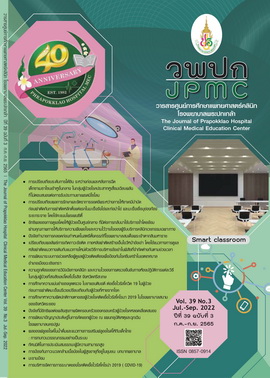Indian Gooseberry
Main Article Content
Abstract
Indian gooseberry is medium-sized perennial. In Thai traditional medicine, fruit of gooseberry was used to make the medicine. Fruit has sour and astringent for cough and expectorant properties. It is the major ingredient of gooseberry cough syrup recipe. It has antioxidant and antibacterial activity but no effect on fungi. The study of hypercholesterolemia patients treating was studied with goose berry extract versus placebo. The result is the group who received the Indian goose berry extract has a statistically significant. And the study in patients with non-erosive reflux disease was studied with Indian goose berry capsule versus placebo. It was found that who received the Indian goose berry capsule had a statistically significant.
Article Details

This work is licensed under a Creative Commons Attribution-NonCommercial-NoDerivatives 4.0 International License.
References
Homhual S. Indian gooseberry [Internet]. [cited 2022 Jan 15]. Available from: http://www.phargarden.com/main.php?action=viewpage&pid=258
Pitiporn S. “Indian gooseberry” a herb not to be overlooked. Moh-Chao-Ban [internet]. 2005 [cited 2022 Feb 1]. Available from: https://www.doctor.or.th/article/detail/1901
Taya S, Whangchai N, Wongpoomchai R. Cancer chemopreventive potential of Indian gooseberry (Phyllanthus emblica). Thai J Toxicol 2021;36(1):33-53
Upadya H, Prabhu S, Prasad A, Subramanian D, Gupta S, Goel A. A randomized, double blind, placebo controlled, multicenter clinical trial to assess the efficacy and safety of Emblica officinalis extract in patients with dyslipidemia. BMC Complement Altern Med [Internet]. 2019 [cited 2021 Nov 30];19(1):27. Available from: https://bmccomplementmedtherapies.biomedcentral.com/track/pdf/10.1186/s12906-019-2430-y.pdf
Varnosfaderani SK, Hashem-Dabaghian F, Amin G, Bozorgi M, Heydarirad G, Nazem E et al. Efficacy and safety of Amla (Phyllanthus emblica L.) in non-erosive reflux disease: a double-blind, randomized, placebo-controlled clinical trial. J Integr Med 2018;16:126-31.

